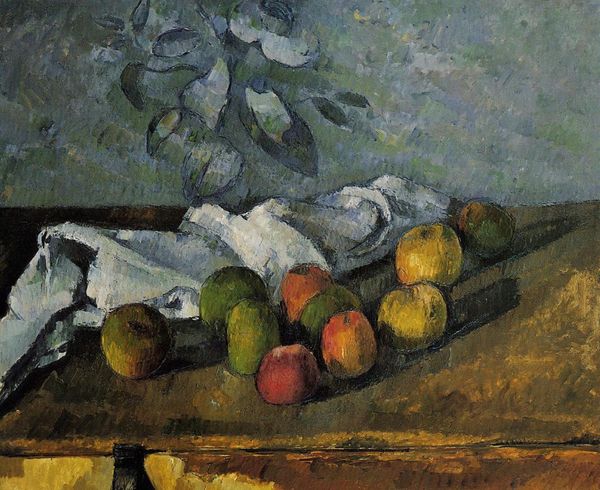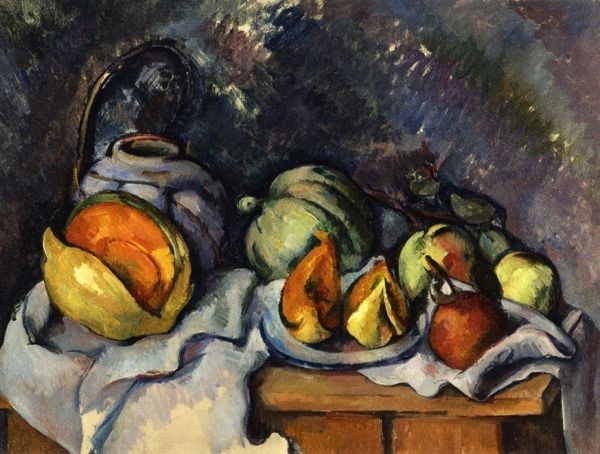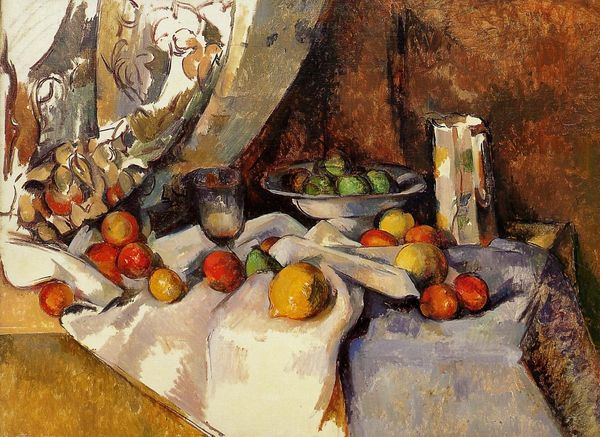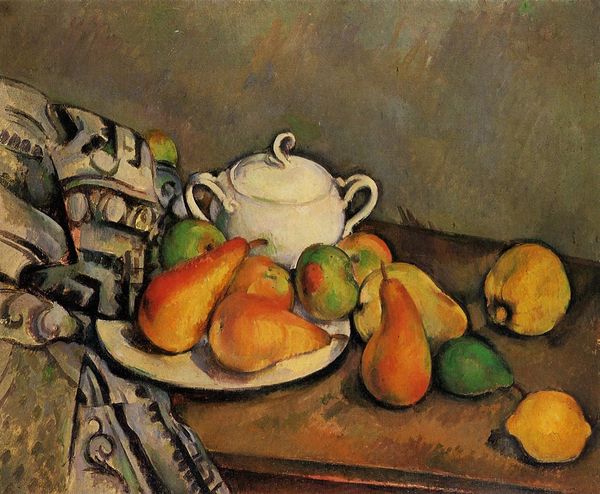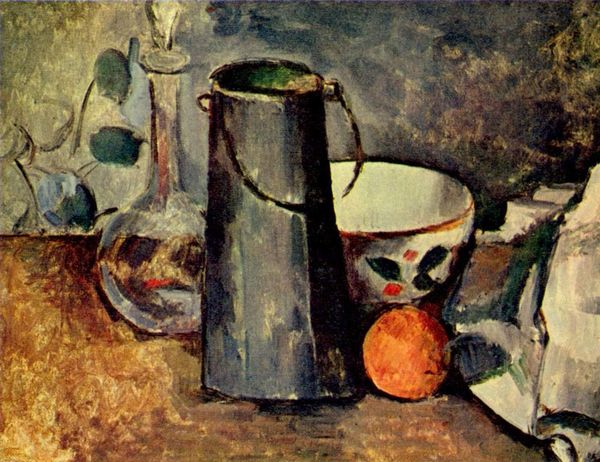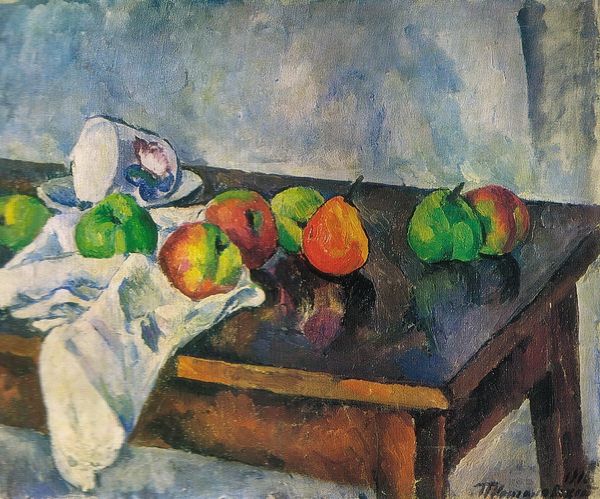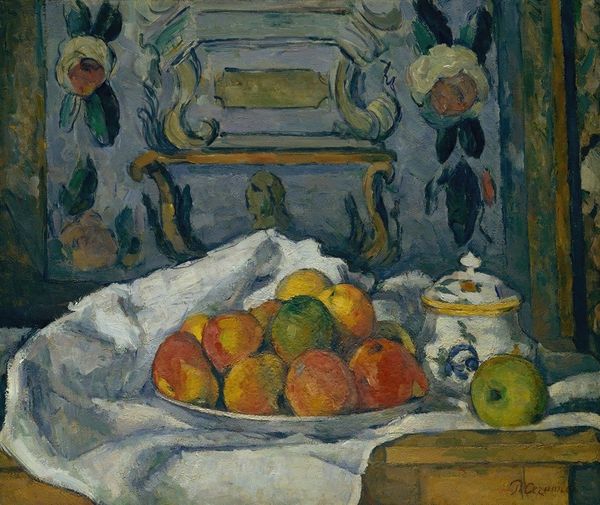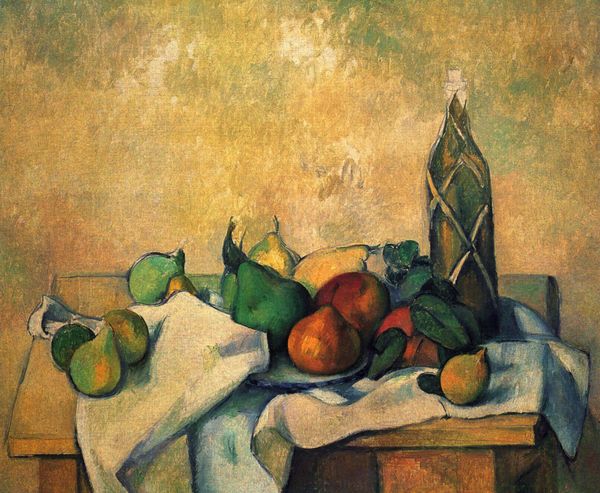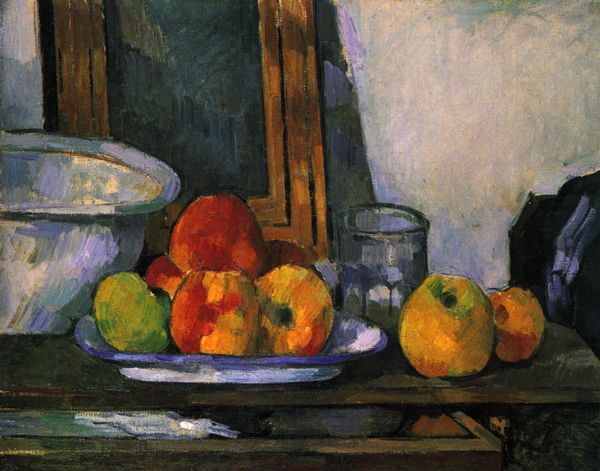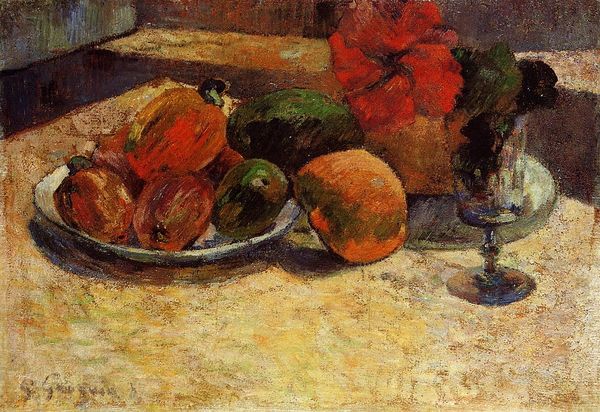
oil-paint, impasto
#
still-life
#
oil-paint
#
landscape
#
oil painting
#
impasto
#
post-impressionism
#
expressionist
Copyright: Public domain US
Editor: This is "Blue Pot and Lemon," painted by Henri Matisse in 1897, using oil paints. The thick impasto gives the painting a real sense of texture, almost like you could reach out and touch the objects. The lemon is the focal point and immediately grabs your attention with its bright yellow colour. What do you make of this still life, considering its structure? Curator: This piece, while seemingly simple, offers a fascinating look into Matisse's early engagement with pictorial space. The composition, although rendered with a visible, almost aggressive, brushstroke, still seeks to order elements—lemon, pot, and drapery—into a cohesive, albeit unstable, arrangement. Observe how the horizon line sits almost at the top edge of the work, pushing the objects forward, flattening the perspective. Editor: I see what you mean. It’s like the space is compressed, and everything is vying for attention. Curator: Precisely. Notice also the tonal relationships. How does the cobalt blue of the pot converse with the cadmium yellow of the lemon? And further, how are these primary blocks mediated by secondary colors? The structural integrity of the painting, despite the gestural application of paint, depends heavily on these formal relationships. Would you not agree? Editor: Yes, definitely. I see the structure differently now, focusing more on how colour and form create meaning beyond just the representation of objects. Thanks! Curator: A painting like this reminds us that the true subject matter is not necessarily the objects depicted, but the language of painting itself: form, color, and composition. The subject is literally the medium, don't you agree?
Comments
No comments
Be the first to comment and join the conversation on the ultimate creative platform.

